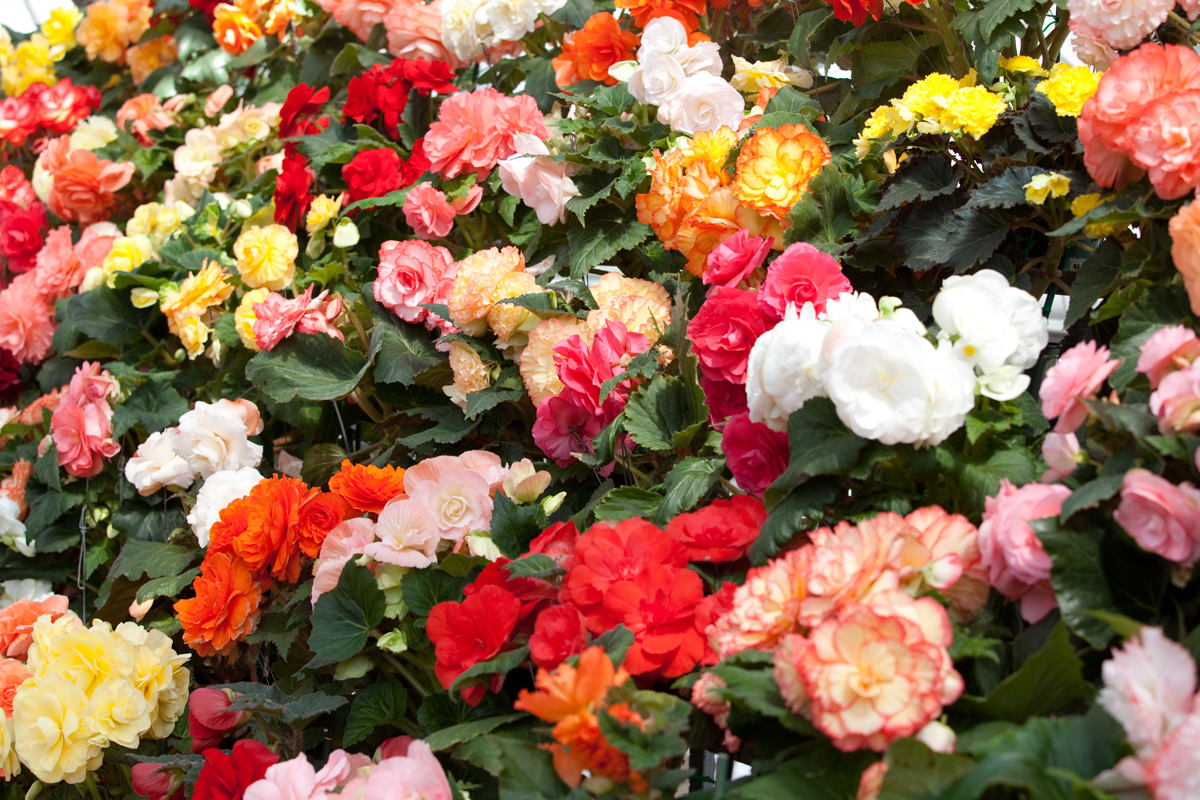Significant Trees
The Ballarat Botanical Gardens has an exceptional collection of exotic conifer, deciduous and native trees featured throughout the Gardens. These trees have now reached a considerable size and contribute to the Gardens charm and character. Of these, some 52 mature trees listed on the National Trust Significant Trees Register.

Begonias
The Ballarat Botanical Gardens is home to two collections of Begonias:
- Tuberous Begonia Collection
- ‘Non- tuberous’ Begonia Collection
Both are registered with the Garden Plant Conservation Association of Australia (GPCAA).
Tuberous Begonia Collection
The Ballarat Botanical Gardens have grown tuberous Begonias since the late 1800’s - many of which had originally been imported from England. The Collection now contains many Australian bred varieties and there are over 240 varieties in the collection. These are the renown Begonias exhibited in the Conservatory during the annual Ballarat Begonia Festival.

Non – tuberous Begonias
Non-tuberous Begonias are grown more commonly for their decorative foliage. The Ballarat Botanical Gardens collection features more than 350 different varieties
Begonia collection fast facts:
- Tuberous begonias were first discovered in 1864 in Peru and Bolivia and have been growing in the Ballarat Botanical Gardens since approximately 1896.
- Today’s nursery collection has grown to over 2,500 plants consisting of 210 named upright varieties and 40 cascading varieties.
- The collection is stored and grown within the Botanical Gardens nursery, requiring some form of attention nearly 10 months of the year.
- In late September the tubers are potted and placed in a heated glasshouse to initiate growth.
- They are given small amounts of water until growth takes off and by late October/November cuttings can commence.
- Stems are thinned down to leave only one or two and by December they are re-potted to their final pot containing slow release fertiliser and moved to an unheated glasshouse.
- The plants are watered by hand at all stages and are checked daily.
- In January the plants are staked and buds are removed to delay flowering which improves flower size later on.
- Begonias are protected from the hottest part of the day, but will not flower well without being given a good amount of light.
- A misting system in the glasshouse reduce the temperature in hot weather as Begonias do not like high temperatures – high temperatures reduce the flower size and can also cook stems if extreme.
- Low twenties is the ideal temperature for Begonia growth. Flower formation commences when the day length reaches 12 hours and stops as the day light hours shorten below 12 hours.
- Begonias grow both male and female flowers on the same plant and each individual flower can last two to three weeks.
The Ballarat Botanical Gardens nursery also holds documented collections of Chrysanthemums, Fuchsias, Hydrangeas, and Pelargoniums which are on display seasonally in the Conservatory.
Sensory Garden
The Ballarat Botanical Gardens Sensory Garden was designed in 1993 with funding assistance provided by the Frank Pinkerton Estate and the Zonta Club of Ballarat. The Sensory Garden is an interactive space within the gardens designed for stimulating the senses of site, sound smell and touch. Opportunities are made available to engage with the garden through observing the diverse range of plants that have been strategically selected for their texture, colour and the smell of their foliage.
The sensory garden is located adjacent landscaped garden beds consisting of a diverse range of plants, some indigenous to the Ballarat region as well as the impressive old Blue Gum tree.
The Sensory Gardens have been upgraded, November 2016 the ‘Western Bedders’ group of the ‘Friends of the Ballarat Botanical Gardens’ worked in collaboration with the City of Ballarat Gardens Crew to undertake the project, subsequently 220 new plants were planted. In addition to the replanting, the design and development of new interpretive signage is being made up to assist people in getting the most out of the Sensory Garden through the implementation of interpretative information and symbols that indicate the plants specific attributes.
